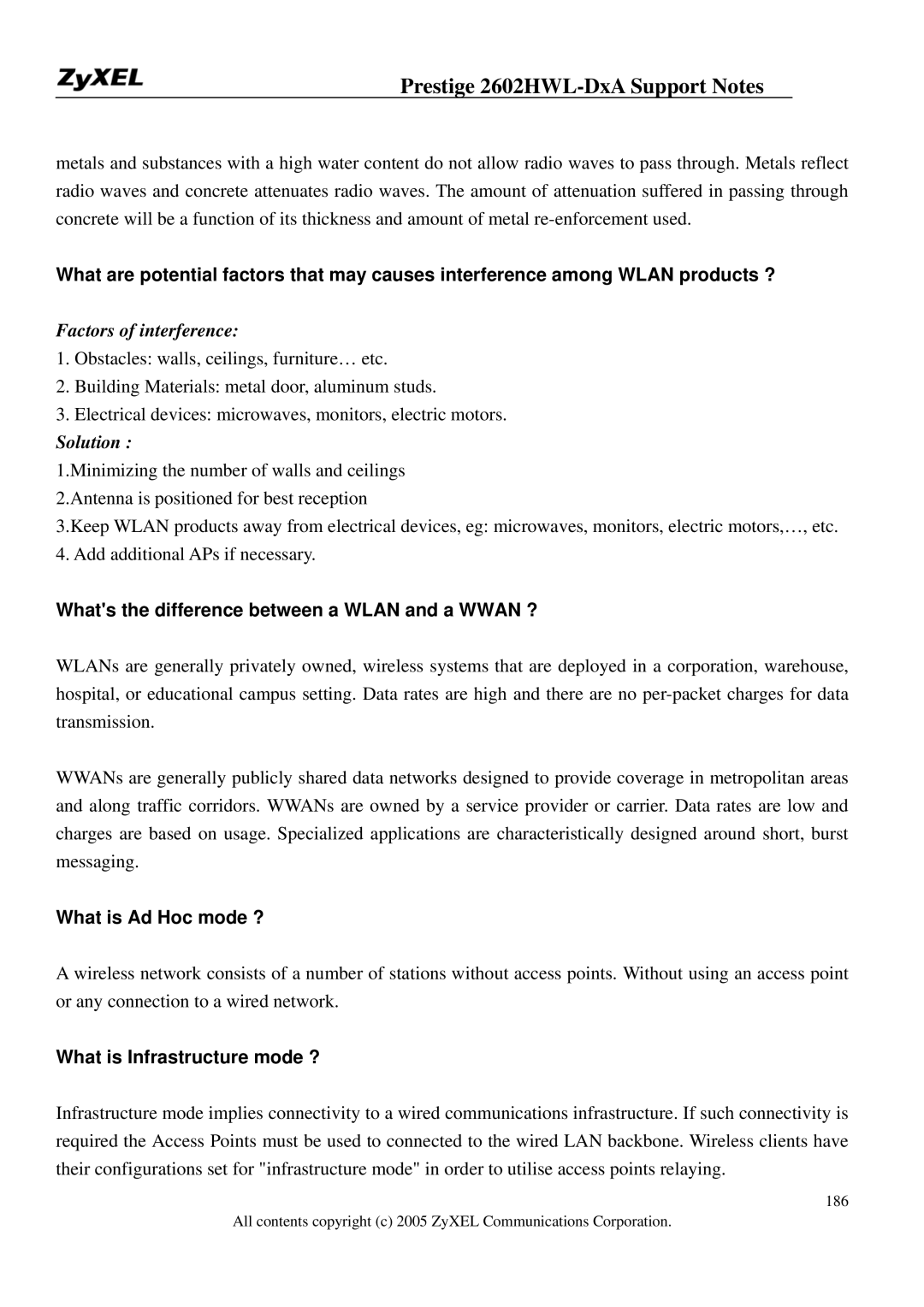Prestige 2602HWL-DxA Support Notes
metals and substances with a high water content do not allow radio waves to pass through. Metals reflect radio waves and concrete attenuates radio waves. The amount of attenuation suffered in passing through concrete will be a function of its thickness and amount of metal
What are potential factors that may causes interference among WLAN products ?
Factors of interference:
1.Obstacles: walls, ceilings, furniture… etc.
2.Building Materials: metal door, aluminum studs.
3.Electrical devices: microwaves, monitors, electric motors.
Solution :
1.Minimizing the number of walls and ceilings 2.Antenna is positioned for best reception
3.Keep WLAN products away from electrical devices, eg: microwaves, monitors, electric motors,…, etc.
4.Add additional APs if necessary.
What's the difference between a WLAN and a WWAN ?
WLANs are generally privately owned, wireless systems that are deployed in a corporation, warehouse, hospital, or educational campus setting. Data rates are high and there are no
WWANs are generally publicly shared data networks designed to provide coverage in metropolitan areas and along traffic corridors. WWANs are owned by a service provider or carrier. Data rates are low and charges are based on usage. Specialized applications are characteristically designed around short, burst messaging.
What is Ad Hoc mode ?
A wireless network consists of a number of stations without access points. Without using an access point or any connection to a wired network.
What is Infrastructure mode ?
Infrastructure mode implies connectivity to a wired communications infrastructure. If such connectivity is required the Access Points must be used to connected to the wired LAN backbone. Wireless clients have their configurations set for "infrastructure mode" in order to utilise access points relaying.
186
All contents copyright (c) 2005 ZyXEL Communications Corporation.
